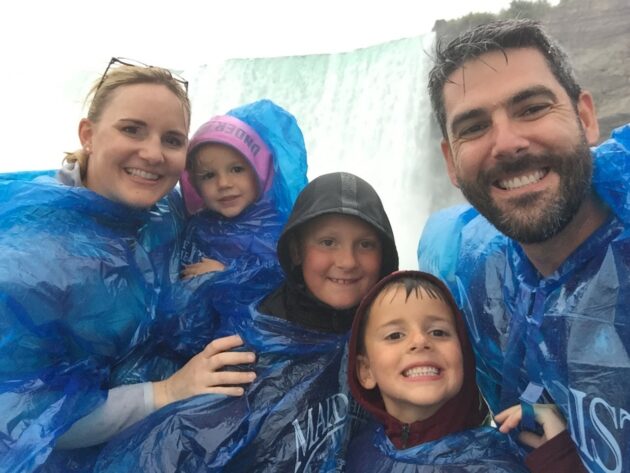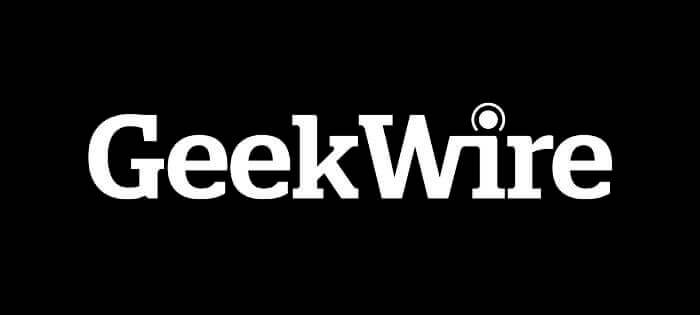How this HR technology leader is guiding business through the tumult of Covid-19
When COVID-19 hit, CEO Nathan Christensen was in the midst of merging Mammoth HR, his Portland, Ore.-based business, with California’s ThinkHR. The two software companies, which provide HR resources, compliance and training to small- and mid-sized businesses, announced the merger in July 2019.

By March, the emergence of the pandemic created a massive surge in demand as customers struggled to manage the impacts on their businesses. It upended the company’s methodical integration of software and services, while accelerating the assimilation of corporate culture as employees bonded through their scramble to meet the onslaught of customer needs.
Guiding companies firsthand through these tumultuous times, as people are losing jobs and watching their nest eggs disappear, has been challenging for ThinkHR and Mammoth HR employees.
“Being on the front lines has been energizing — and it has taken an emotional toll on our team,” Christensen said. Being on the front lines has been energizing — and it has taken an emotional toll on our team.
The demand from customers has been so high as companies navigate layoffs, reduced hours and workplace safety, that Think HR and Mammoth HR launched a free COVID-19 Crisis Response Center to help. The site has had 100,000 pageviews since its March launch.
When Christensen was considering his career path some years ago, leading a tech-driven HR company wasn’t on the short list.
His father-in-law launched Mammoth HR in 2001. Christensen helped out with the San Francisco-based startup motivated not by a passion for HR, but to win some favor. “Frankly, I was trying to be a good son-in law,” he said. Christensen went on to attend law school at the University of Chicago and was enjoying working for a Perkins Coie in Portland when his mother-in-law fell ill and he was drawn back to Mammoth in 2013.
He planned to help out for a year. But as Christensen began to appreciate the positive impact that his company had with its customers, he decided to stay. He sees his employees experiencing the same appreciation now.
“It has certainly been galvanizing for our team,” he said, “to understand the role that they can play to help businesses in such a hard time.”

We caught up with Christensen for this Working Geek, a regular GeekWire feature. Keep reading for his answers to our questionnaire.
Current location: Portland, Oregon
Computer types: Lenovo ThinkPad X1 Carbon. Lightweight, reliable, easy for travel.
Mobile devices: iPhone 11, Apple Watch, iPad. Yes, I’m one of those confused people who uses a PC laptop and Apple everything else.
Favorite apps, cloud services and software tools: My favorite apps are ones that simplify life or help me connect with people and ideas — apps like Slack, Amazon Alexa, Libby, Lifesize, Venmo and Twitter. We’ve also been using Mixtiles to decorate our home with pictures of friends and family during the COVID-19 crisis.
Describe your workspace. Why does it work for you? We transitioned to work-from-home in mid-March due to COVID-19, and my wife, our three kids, our dog and I all had to create new everyday workspaces at home. I set up shop in a room off the side of our house, which we called the “office” but rarely used. My new workspace has most of the elements that are key for me to be productive: good natural light, a large monitor, music, a clean work surface, a stack of yellow Post-Its, easy access to outdoors and a sense of connection — our kids working nearby or neighbors passing by outside.

When I’m in the normal office, I like to sit with our teams that are working directly with our customers, so I can see our mission, values and impact at work. I’ve grown more accustomed to working from home, but that sense of intimacy with our people, customers and mission has been hard to replace through video conferencing and collaboration tools.
Your best advice for managing everyday work and life? Remember that your time and attention are the most valuable assets you have. Give generously of both to the people and things that deserve them, and protect them from distractions that aren’t important.
Each morning I write down on a Post-It Note the the most important things I need to do that day and stick it to my monitor. Sometimes those three things take 15 minutes; sometimes they take all day. Often they are a mix of personal and work. Writing them down and keeping them literally front-and-center helps me stay tuned to where I want and need to focus my attention during the day.
Your preferred social network? How do you use it for business/work? I use LinkedIn for networking and Twitter for learning about and exchanging information and ideas.
Current number of unanswered emails in your inbox? A lot. I read every email I receive but I respond to fewer than half of them. I think responsiveness is important, but one of the things I’ve learned as CEO is how important it is to pick and choose when — and when not — to respond.
I work with a group of talented and dedicated people who are better experts than I am at the motions within our business. If one or more of them is on the email thread, the best outcome will come from empowering and trusting the experts to solve the problems or chase the opportunities that come across our desks each day.
Number of appointments/meetings on your calendar this week? 25. As with emails, I’ve learned it’s important for me to know when to opt-in and opt-out of meetings — a discipline I’m still working on. Currently I spend about 70% of my work time in meetings or on calls. I block out 60-to-90 minutes during the work day for uninterrupted focus time and also dedicate time early in the morning, when just our dog and I are awake. That time alone gives me an opportunity to prepare for and follow-up on meetings, as well work on the strategic issues that are further out ahead of our current company focus.
How do you run meetings? If I’m running a meeting, my goal is to make sure the objective is clear and connected to our mission, vision and strategy, the right people are in the room, and the dialogue is as open, engaged and constructive as possible. If there are people in the room I haven’t met before, I try to establish a sense of connection and trust with them either before or during the meeting, so we get the full benefit of their perspective and insight during the conversation.
At the end of the meeting, I want to make sure we document and distribute our key decisions and action items, so we can rapidly build on the progress we made rather than rehash it later.

Everyday work uniform? In the office, I usually wear jeans and a dress shirt, pullover or sweater. When we first transitioned to work-from-home, I stuck with that routine, thinking it would prompt me to be in a “work” mindset during the day. I quickly found that didn’t work. Rather than pretend I was in my normal routine, I needed to embrace my new environment and create new patterns of working. Most days I wear a t-shirt and jeans, but when temperatures get over 70 degrees you’ll see me in shorts and flip-flops, as mandated by Oregon state law.
How do you make time for family? My wife and I have three young children, ages 6, 8 and 10. When we’re in our normal routines, I block off 7-8:30 a.m. and 6-9 p.m. for family. If I need to work on the weekends, I try to do it before the kids wake up so they don’t feel the impact.
Because of COVID-19 and the shelter-in-place orders, we’re operating with different routines and the hours and days are much more fluid. To stay connected with our family and also stay productive at work during this period, I schedule 30-minute family “meetings” during the workday. This week’s meetings included “bike ride,” “lunch,” “play catch” and “read stories.”
Best stress reliever? How do you unplug? Living in the Pacific Northwest, my best stress relievers vary by the season. During spring, I coach little league baseball for my sons. Being out on the field, working with a group of kids who are eager to learn and work together, is a time when I’m able to unplug and be present. During the summer, I love to be out on or in water, whether it’s swimming, canoeing, boating, etc. During fall, I like to take bike rides around Portland. And during winter, I find my escape on the ski slopes with our kids.
What are you listening to? Now that we’re working from home full-time, I spend most of my time listening to our kids’ voices. Happy, sad, excited, frustrated. If I thought my days sometimes were roller-coasters, the range of emotions our kids experience during an average day makes mine seem completely uneventful.
When it comes to music, I have eclectic tastes, but as a family we like Zac Brown Band, which we got hooked on during an RV trip a few years ago. I’ll also often stream live baseball games, podcasts or news.

Daily reads? Favorite sites and newsletters? I’m an avid baseball fan, and during the baseball season I start each morning by reading FanGraphs. I also track politics and news carefully, tuning into most of the major news sites plus a few blogs, like Political Wire.
Book on your nightstand (or e-reader)? “The Advantage” by Patrick Lencioni. I’m curious about the idea of organizational health as a competitive advantage, and have been interested in Lencioni’s writing for several years. I generally try to alternate fiction and nonfiction, and underneath “The Advantage” is “An American Marriage” by Tayari Jones, which was an interesting read.
Night owl or early riser? Early riser. I’ve always liked mornings and I finally lost the ability to sleep past 5:30 a.m. a few years ago. I fought it for the first year or two, trying to change my patterns to sleep in or at least learn how to fall back asleep — especially on weekends or vacation. Now I just embrace it and force our dog, Callie, to get up with me. I usually turn off the light around 10 p.m.
Where do you get your best ideas? From others: kids, authors, academics, peers, colleagues, mentors, commentators, customers. I gravitate to simple and innovative thinking, and I love the challenge of finding new ways to connect, extend or apply the ideas of others to our business, our culture, my work or my personal life.
Whose work style would you want to learn more about or emulate? There are so many great business and civic leaders that I try to learn from. But one person from a different context whose work style I’d like to learn more about is Gregg Popovich. Gregg is the long-time coach of the San Antonio Spurs. I’ve read a lot about his approach to leadership and management, and have been impressed by his ability to create deep personal connections and commitment, both between himself and his players and among his players.
###
This article was authored by Lisa Stiffler, and was originally published on May 2, 2020 by GeekWire.


